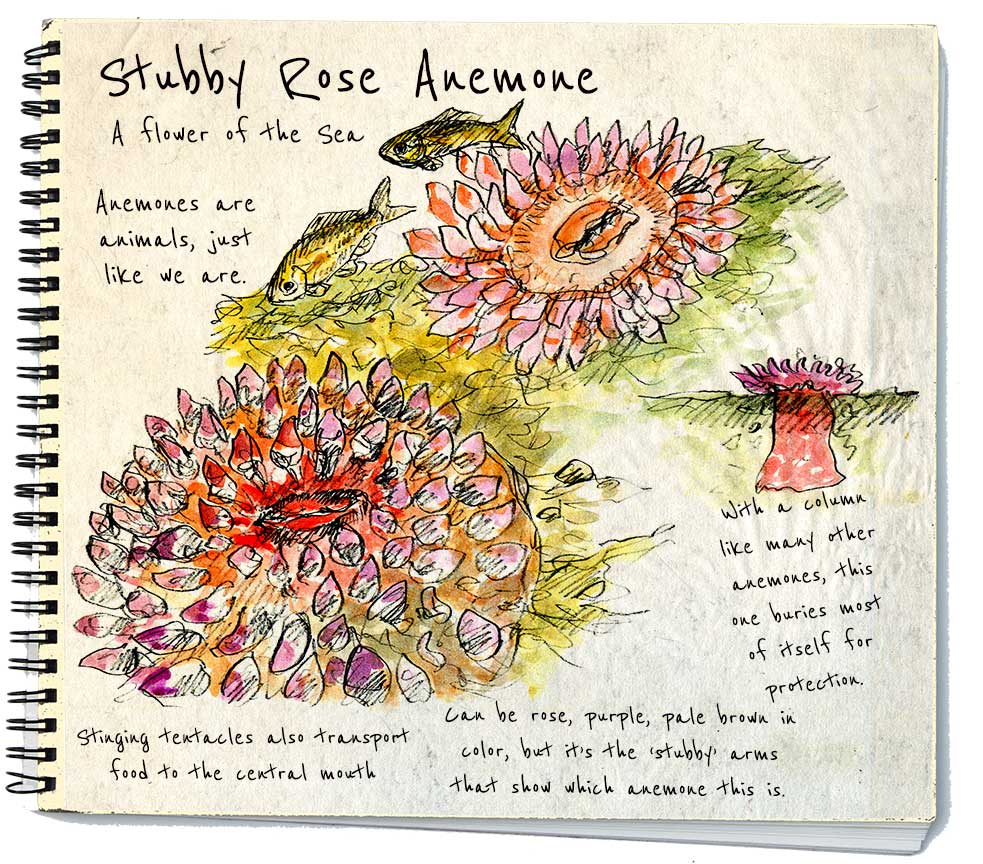This is another page from my 48 North magazine monthly story series and I’m getting these on my website so there’s a record. This was published last fall. These little efforts aren’t big wall murals or carefully thought out paintings, but more like the art I like to do on backcountry hikes – quick and dirty paintings that are really fun for me. Sketchpad and a pencil.
Below is the text that went with this. I try not to press down with too much science, but some of these monthly efforts are really interesting when I get into them, and just have to pass it on. Anemones are favorite critters of mine, and a good thing since there are many varieties here where I live in the Pacific Northwest. The closest anemone? Probably a half mile from where I write this.
Anemones are predatory sea animals named after land-based flowering plants of the buttercup family. They really do look like flowers! Some can move around, most remain anchored in one place, others float near the surface. Often, anemones line rocks, waving their stinging tentacles in search of passing prey. Many are solitary but some form groups, like a garden in spring. The stubby rose anemone has carved out a life of being mostly buried in sand and gravel, often with only its short tentacles exposed, looking like a 4” wide red or pink pin cushion. Anemones often live in close association with small crabs, fish or other animals to their mutual benefit, each helping the others is subtle ways. When we describe something as an animal, we usually think of cats or bats, deer or mice, but anemones really are animals.
Muscles and nerves, stomach and mouth, arms and a column for a body – they’re like other animals in many ways. But anemones also have a few things most animals don’t have, like stinging tentacles that help subdue prey. The tentacles are armed with special cells that are defensive and also used to subdue prey. A tiny trigger hair, when brushed, sets off a harpoon that injects a lethal dose of toxin into the victim. Sometimes it’s another anemone and the battle can leave both injured. On a low tide, you can find these interesting animals, yes, animals, in gravelly sand, looking decidedly stressed they await incoming water to let it bloom again. Their stubby rose-colored arms are good descriptors, but there are also dozens of other anemones in the Salish Sea. The stubby rose has just recently been discovered to live here.
Larry Eifert paints and sails the Pacific Northwest from Port Townsend. His large-scale murals can be seen in many national parks across America, and at larryeifert.com.

